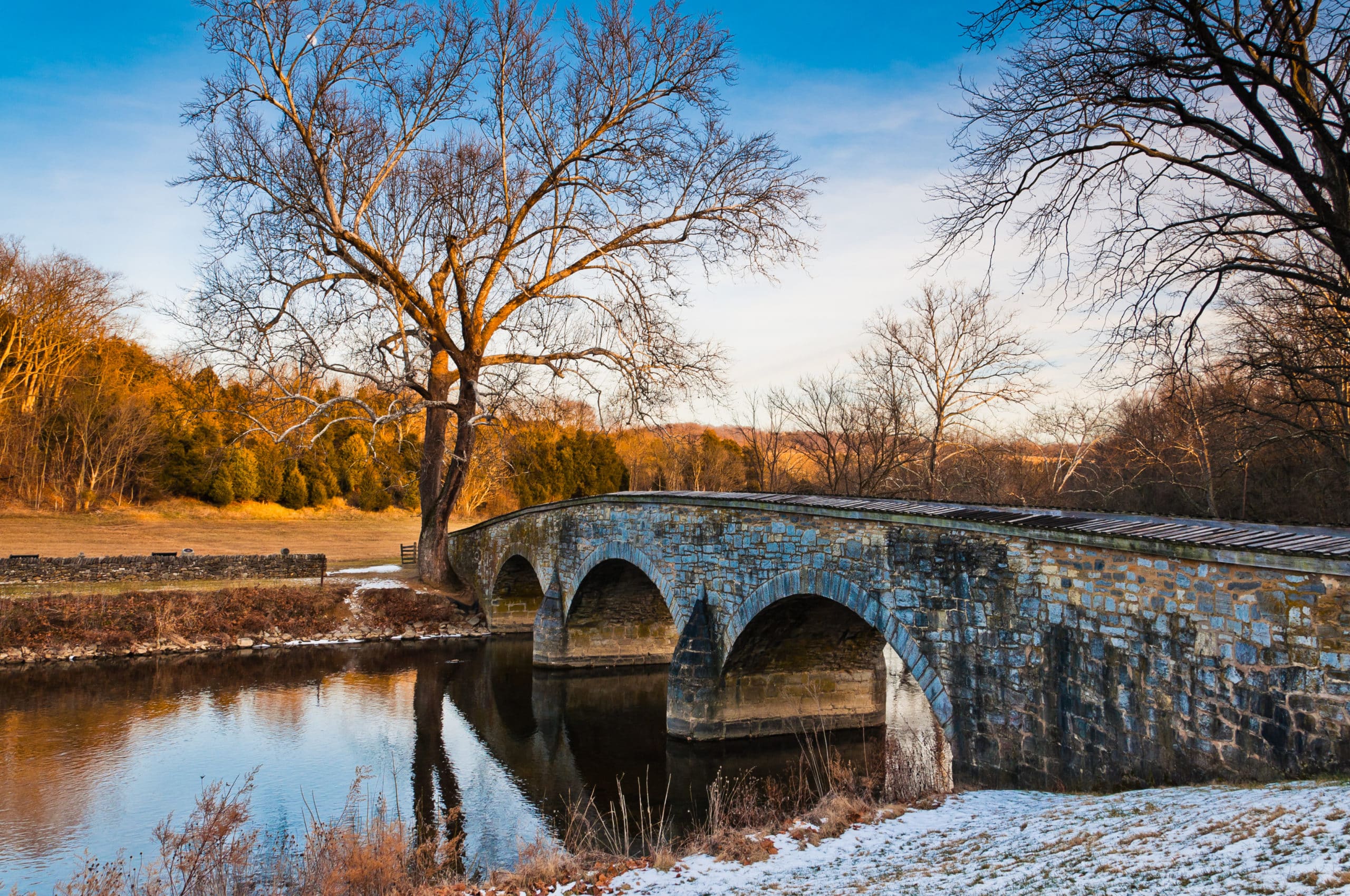
Article Summary: Maryland National Parks
Historic Sites In Maryland. More Than Just Parks has 15 incredible must-see sites for you to visit.
I’ve been to so many of these amazing places since retiring from teaching in 2018. Did I mention that I taught history? I spent a lifetime teaching about the history behind these momentous sites. Then I got to see them firsthand. And now I’m sharing the stories of these incredible places with you. It doesn’t get any better than that!
I’m going to give you my list of the Top 15 Historic Sites in Maryland that you’ll want to see. We’ve got amazing monuments, fascinating exhibits, historic parks, legendary trails and so much more.
Now if you’re planning a trip to the Old Line State then one book that I highly recommend is: Maryland Bucket List Adventure Guide: Explore 100 Offbeat Destinations You Must Visit!
Without further ado, let’s dive in!
Top 15 Historic Sites In Maryland
15. Edgar Allan Poe House and Museum
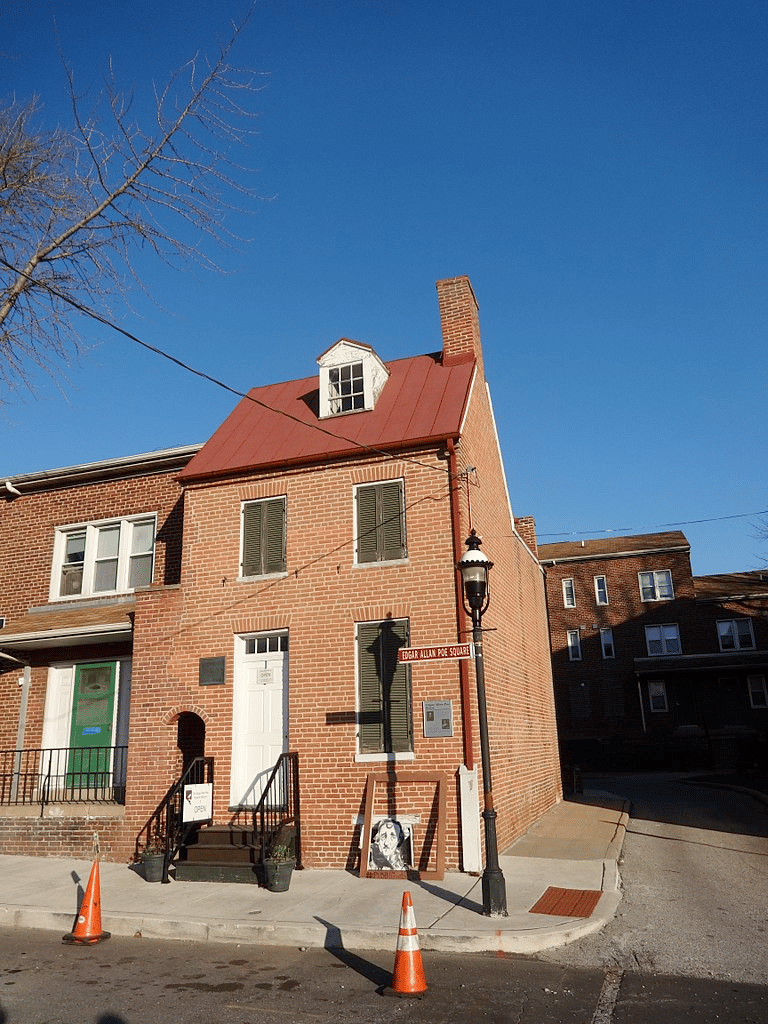
Maryland is known for its blue crabs and the city of Baltimore, a major historic trading port, baseball power and birthplace of the national anthem. But it’s also home to some amazing historic sites which More Than Just Parks is excited to share with you.
We’re kicking off our list of the Top 15 Best Historic Sites In Maryland at #15 with a site which celebrates a literary legend. Welcome to the Edgar Allan Poe House and Museum.
Edgar Allan Poe is widely considered one of the most influential figures in American literature. He is best known for his dark and mysterious poetry and short stories, many of which explore themes of death, madness, and the supernatural.
Poe’s work has been credited with ushering in the modern detective story, science fiction, and the gothic genre.
His most famous works include the poem “The Raven,” the short story “The Tell-Tale Heart,” and the detective story “The Murders in the Rue Morgue.” He also wrote many other poems, short stories, and essays, many of which were published in literary magazines of the time.
Poe’s writing style is characterized by his use of vivid imagery, intense psychological horror, and elaborate wordplay. His works have had a lasting impact on American literature, and his legacy continues to be celebrated by readers and writers alike.
What Can I See At The Edgar Allan Poe House and Museum
At the Edgar Allan Poe Home and Museum, you can see various items and artifacts related to the life and work of the famous author. Some examples include:
- Personal belongings and furnishings of Poe
- Original manuscripts and letters
- Original period furniture
- Exhibits and displays on the life and literary career of Poe
- Artifacts related to Poe’s famous works, such as “The Raven”
- Rare books and first edition copies of Poe’s works.
14. National Museum of Civil War Medicine
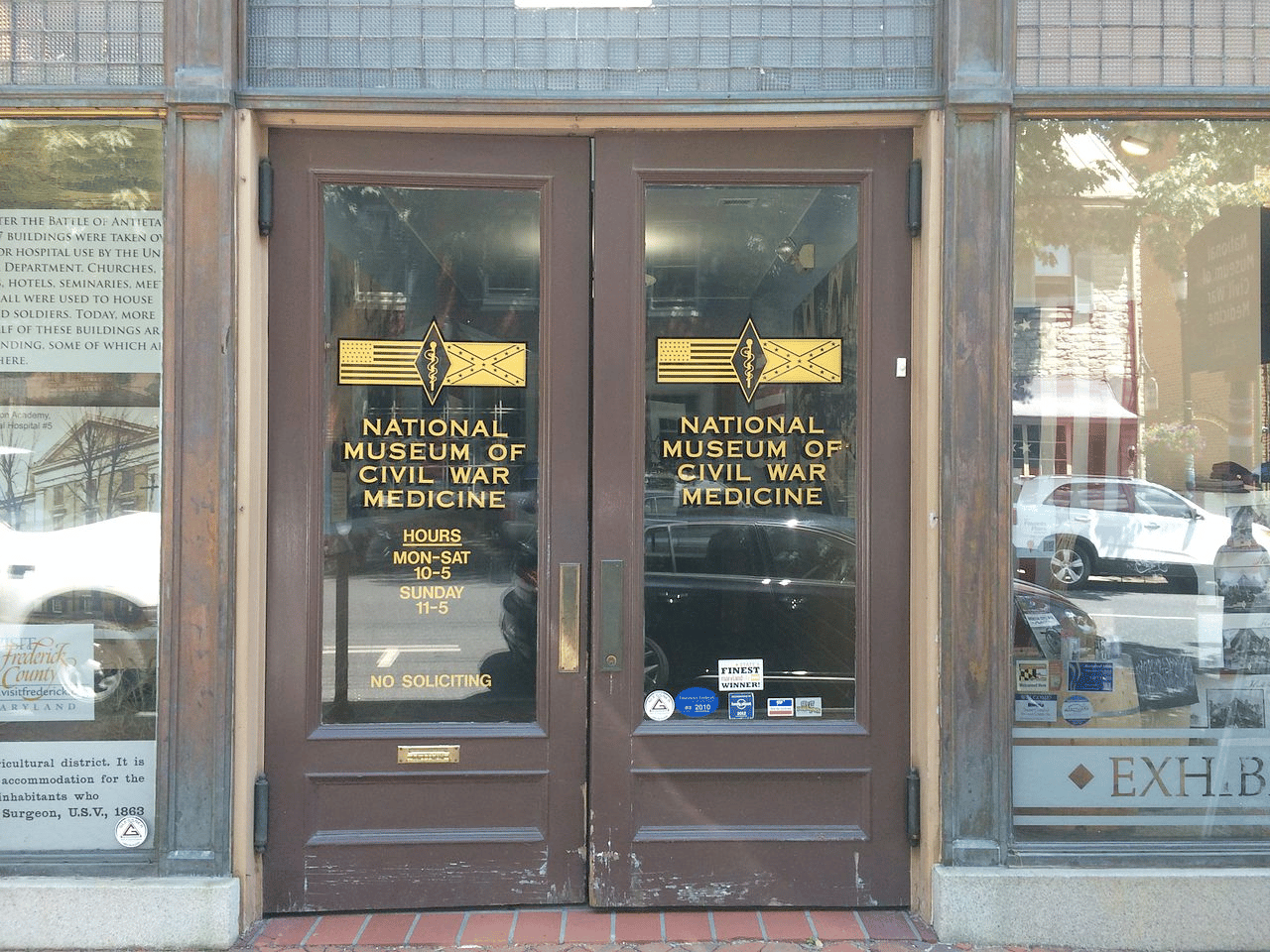
We pride ourselves on developing lists of historic sites with something for everyone including those of you who are fascinated by the history of medicine. At #14 on our list of the Best Historic Sites In Maryland is the National Museum of Civil War Medicine.
This site is dedicated to preserving and showcasing the history of medicine during the American Civil War.
The museum was founded in 1991 with the aim of educating the public about the medical aspects of the war and highlighting the innovations and advancements in medical treatment and technology that took place during this time.
The museum showcases various exhibits and displays related to the history of Civil War medicine, including original surgical instruments, medical equipment, and manuscripts.
It also has an extensive collection of artifacts, photographs, and other historical documents that illustrate the experiences of doctors, nurses, and soldiers during the war.
Additionally, the museum offers educational programs and events to engage visitors and promote an understanding of the important role that medicine played in the Civil War and its impact on modern medicine.
13. Benjamin Banneker Historical Park and Museum
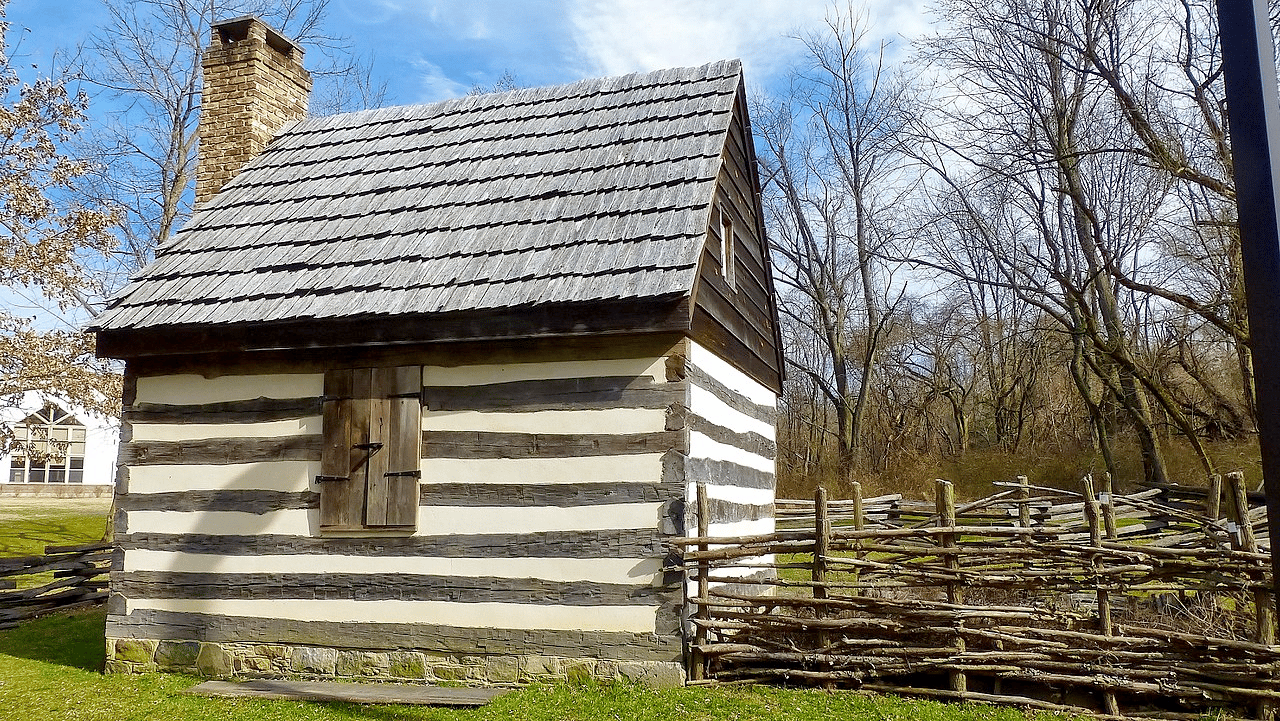
We’re moving right along with some amazing places to see and things to do. At #13 on our list of the Best Historic Sites In Maryland is the Benjamin Banneker Historical Park and Museum.
So, Who Was Benjamin Banneker?
Benjamin Banneker (1731-1806) was an African American mathematician, astronomer, clockmaker, and farmer. He is best known for his significant contributions to the fields of mathematics and astronomy during the late 18th century.
Banneker was born to a free African American family in Maryland, where he taught himself to read and write. He was primarily self-taught and learned mathematics and astronomy through books and his own observations.
One of Banneker’s most notable achievements was his work in predicting solar and lunar eclipses. He accurately predicted a solar eclipse in 1789, which helped to establish his reputation as an astronomer. He also published an almanac, “Benjamin Banneker’s Almanac,” from 1792 to 1797, which contained information on weather, tides, and astronomical events.
In addition to his work in astronomy, Banneker was also a skilled clockmaker. He built his first clock entirely from wood in 1753, and later, he constructed a clock entirely from brass that kept accurate time for more than 20 years.
Banneker was a vocal advocate for the abolition of slavery and wrote several letters to Thomas Jefferson, challenging his views on slavery and the treatment of African Americans. Banneker’s correspondence with Jefferson helped to inspire the abolitionist movement and is now considered an important part of American history.
The Benjamin Banneker Historical Park and Museum
The Benjamin Banneker Historical Park and Museum is a historic site located in Oella, Maryland, that commemorates the life and legacy of Benjamin Banneker.
The park includes the site of Banneker’s former farm, which is now a nature preserve, as well as a museum that houses exhibits and artifacts related to his life and work.
The museum features interactive exhibits that explore Banneker’s achievements in astronomy, mathematics, and engineering, as well as his contributions to the abolitionist movement and his advocacy for civil rights and social justice.
The Benjamin Banneker Historical Park and Museum was established in 1998 to honor Banneker’s life and legacy and to promote education and awareness about African American history and culture.
Today, the park and museum serve as a community resource and educational center, offering guided tours, educational programs, and events that celebrate Banneker’s legacy and inspire visitors to learn more about the rich history and diverse culture of Maryland.

12. B & O Railroad Museum
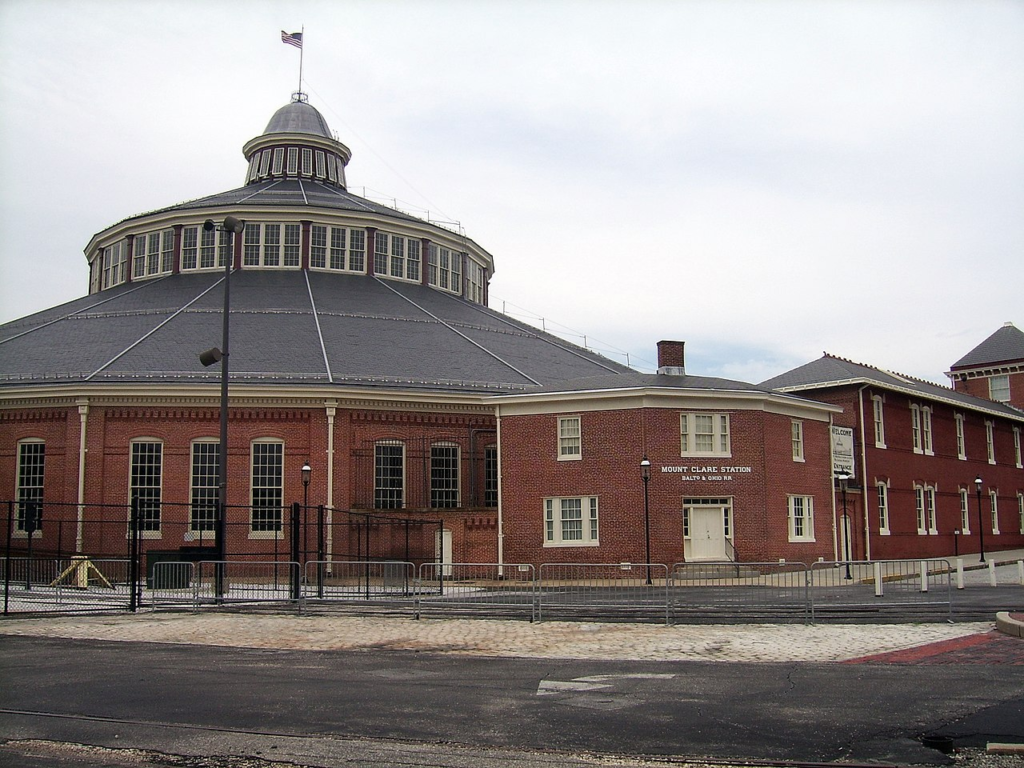
It has been called one of the most significant collections of railroad treasures in the world and has the largest collection of 19th-century locomotives in the U.S. And it’s our next historic site in Maryland. At #12 on our list is the B&O Railroad Museum.
The B&O Railroad Museum is located in Baltimore, Maryland, that celebrates the history and legacy of the Baltimore and Ohio Railroad, one of the oldest and most important railroads in the United States.
The museum is located on the site of the historic Mount Clare Station, which was built in 1829 and served as the headquarters for the B&O Railroad for many years. Today, the museum features a collection of historic locomotives, rail cars, and other artifacts that tell the story of the B&O Railroad and its impact on American history.
Some Of The Most Significant & Iconic Locomotive Of The Steam Era
The museum’s collection includes some of the most significant and iconic locomotives of the steam era, including the Tom Thumb, the first American-built steam locomotive, and the Lafayette, which was used to transport President Lincoln’s body from Washington, D.C. to Springfield, Illinois, after his assassination.
In addition to its collection of historic locomotives and rail cars, the B&O Railroad Museum features exhibits that explore the history of the railroad industry and its impact on American culture and society.
It also offers educational programs and events, including train rides and special exhibits, that provide visitors with a hands-on experience of the history of railroading in America.
The B&O Railroad Museum is a testament to the ingenuity, perseverance, and vision of the men and women who built and operated the Baltimore and Ohio Railroad, and it serves as a reminder of the important role that railroads played in shaping the economic and social landscape of the United States.
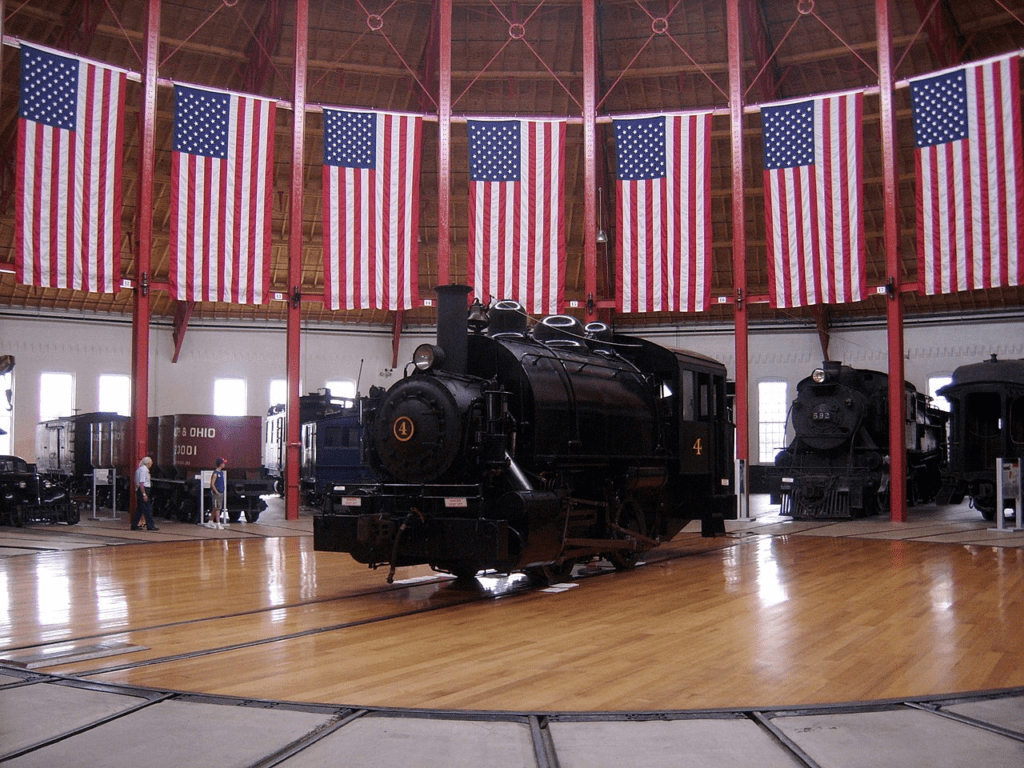
11. Frederick Douglass Museum and Cultural Center
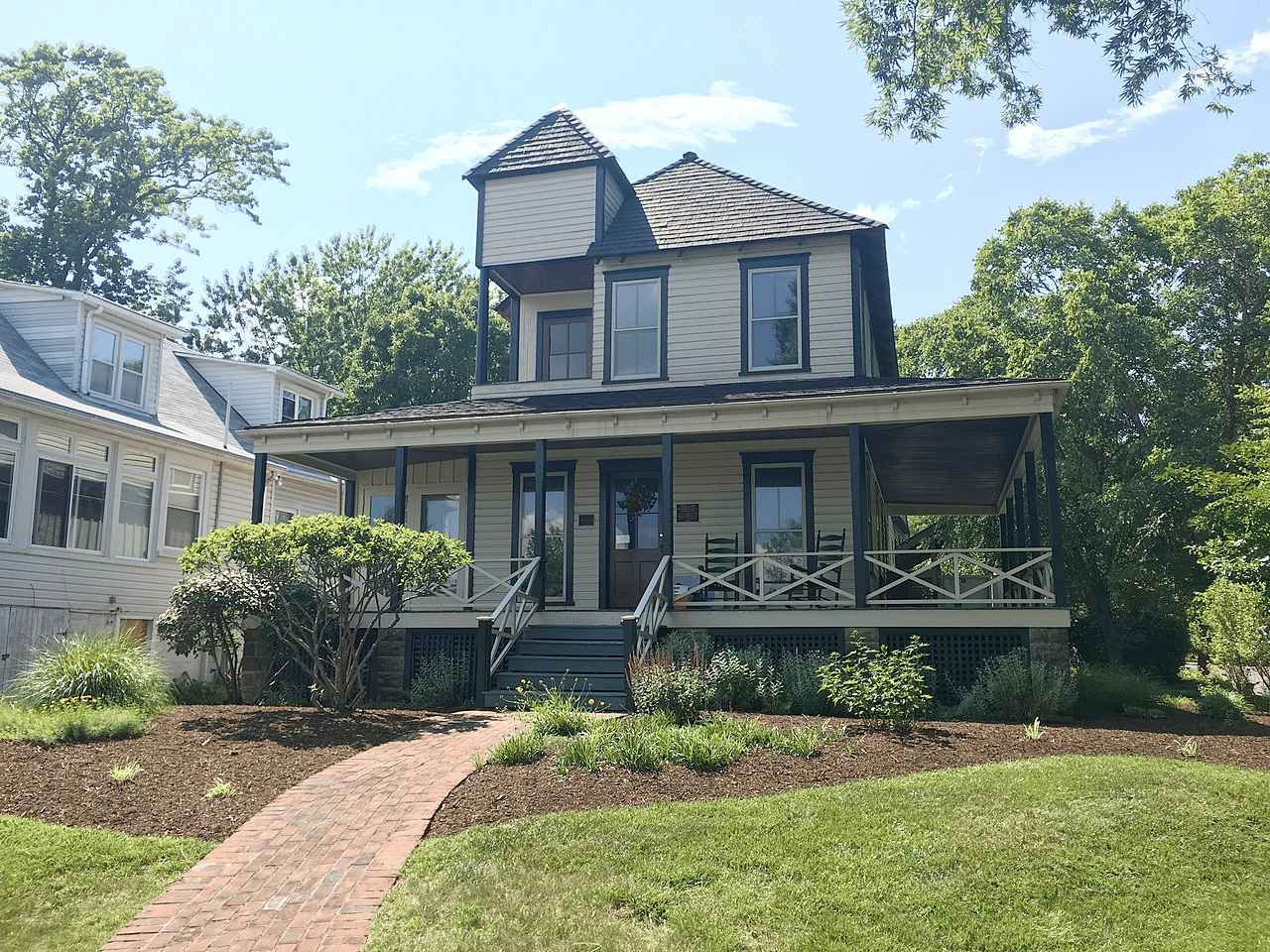
From a museum which celebrates locomotives to a man who became a leader in the abolitionist movement, which sought to end the practice of slavery, before and during the Civil War, our next site celebrates the life and legacy of Frederick Douglass.
Frederick Douglass
Frederick Douglass (1818-1895) was an American social reformer, abolitionist, writer, and orator. He was born into slavery in Maryland, but escaped to freedom in 1838 and went on to become one of the most prominent and influential advocates for the abolition of slavery and equal rights for African Americans in the 19th century.
Douglass published his autobiography, Narrative of the Life of Frederick Douglass, an American Slave, in 1845, which became a bestseller and helped to further the abolitionist cause. He also founded and edited several abolitionist newspapers, including The North Star and Douglass’ Monthly.
During the Civil War, Douglass became a consultant to President Abraham Lincoln and an advocate for the recruitment of African American soldiers into the Union Army. After the war, he continued to fight for civil rights and was a prominent supporter of women’s suffrage.
The Frederick Douglass Museum & Cultural Center
The Frederick Douglass Museum and Cultural Center is located in Highland Beach, Maryland. It celebrates the life and legacy of Frederick Douglass, one of the most important African American leaders of the 19th century.
The museum is located in a historic house that was once owned by Douglass, who lived in Highland Beach during the last years of his life. The museum features exhibits and artifacts that explore Douglass’s life and legacy, including his role as an abolitionist, author, orator, and statesman.
The museum’s exhibits include photographs, documents, and artifacts that provide a glimpse into Douglass’s personal life and his contributions to American history. Visitors can learn about Douglass’s escape from slavery, his work as an abolitionist and advocate for civil rights, and his efforts to promote education and literacy among African Americans.
In addition to its exhibits, the Frederick Douglass Museum and Cultural Center offers educational programs and events that celebrate Douglass’s legacy and promote awareness of African American history and culture.
The museum hosts lectures, workshops, and cultural events throughout the year, as well as guided tours of the historic house and grounds.

Top 10 Historic Sites In Maryland
10. Washington-Rochambeau Revolutionary Route National Historic Trail
We’re on to the Top 10 Historic Sites In Maryland. And, at #10, we have a site which celebrates a historic alliance that helped to make a revolution. Welcome to the Washington-Rochambeau Revolutionary Route National Historic Trail.
The Washington-Rochambeau Revolutionary Route National Historic Trail is a 680-mile long trail that commemorates the alliance between the American and French armies during the American Revolutionary War.
The trail follows the route taken by General George Washington and General Jean-Baptiste de Rochambeau and their troops as they marched from Newport, Rhode Island, to Yorktown, Virginia, where they won the decisive battle of the war in 1781.
The idea of creating a trail to commemorate this historic alliance was first proposed in the 1930s, but it wasn’t until 1992 that the Washington-Rochambeau Revolutionary Route Association was formed to begin planning and promoting the trail. In 2009, the trail was designated as a National Historic Trail by the United States Congress.
The trail includes a variety of historic sites and landmarks, including battlefields, encampments, and museums. Some of the most significant sites along the trail include the Newport Historical Society in Rhode Island, the Yorktown Victory Center in Virginia, and the American Revolution Museum at Yorktown.
Today, the Washington-Rochambeau Revolutionary Route National Historic Trail is a popular destination for history buffs, hikers, and cyclists who want to explore the rich history of the American Revolutionary War and the important role that the French played in helping the Americans win their independence.
RELATED: 10 BEST Revolutionary War Sites In America
9. Monocacy National Battlefield
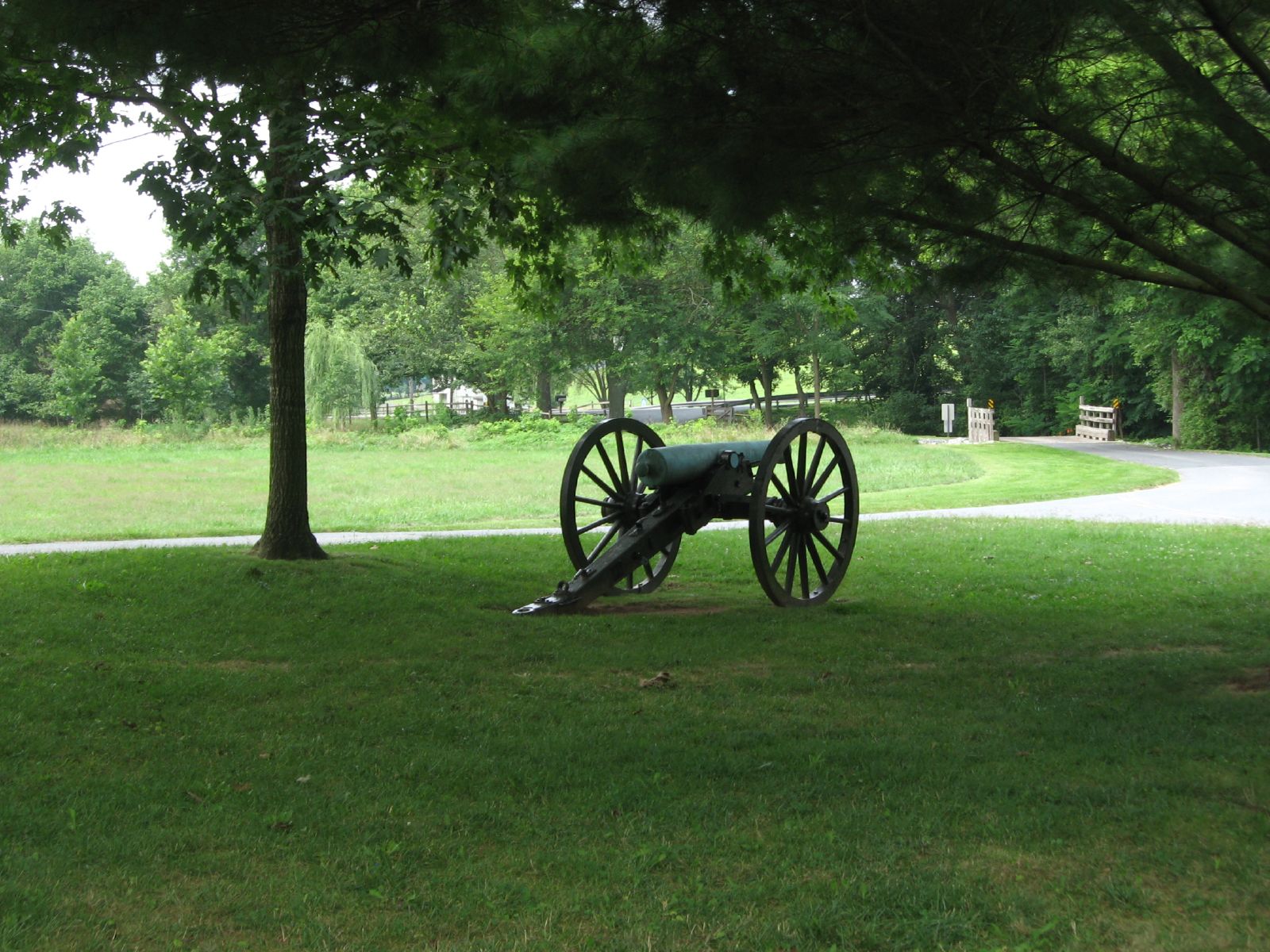
We move from a site which celebrates a Revolutionary War alliance to one which honors a Civil War battle. At #9 on our list of the Best Historic Sites In Maryland is the Monocacy National Battlefield.
The Battle of Monocacy, which took place just south of Frederick, MD in 1864, is considered one of the most important historical places in Maryland.
The battle was dubbed “The Battle That Saved Washington” as the Union army was not victorious, but it slowed General Jubal Early’s advancement towards the largely unprotected Capital. This provided time for Federal troops to arrive and defend Washington D.C. from Confederate capture.
Monocacy National Battlefield is largely unchanged since the mid 1800’s, and offers visitors over 1600 acres of farm fields, historic buildings, and beautiful views.
The park is open to the public and offers guided tours, walking trails, and the chance to learn about the battle and its significance in American history.
Things To See & Do
Here are some things to do at Monocacy National Battlefield:
- Take a self-guided tour: There are several walking trails and driving routes that allow visitors to explore the battlefield at their own pace. Maps and brochures are available at the Visitor Center.
- Visit the Visitor Center: The Visitor Center features exhibits and artifacts that tell the story of the Battle of Monocacy and the impact of the Civil War on the local area.
- Attend a ranger-led program: Park rangers offer a variety of programs throughout the year, including guided walks, talks, and living history demonstrations.
- Explore the Best Farm: The Best Farm was a key location during the Battle of Monocacy and is now a living history site. Visitors can explore the farm buildings and see demonstrations of period farming techniques.
- Picnic: There are several picnic areas throughout the park that offer beautiful views of the battlefield and surrounding countryside.
- Attend special events: Monocacy National Battlefield hosts a variety of special events throughout the year, including living history weekends, reenactments, and commemorative ceremonies.
- Hiking: The park has several hiking trails that range from easy to moderate difficulty, including the 1.6-mile Ford Loop Trail and the 6.5-mile Worthington Farm Loop Trail.
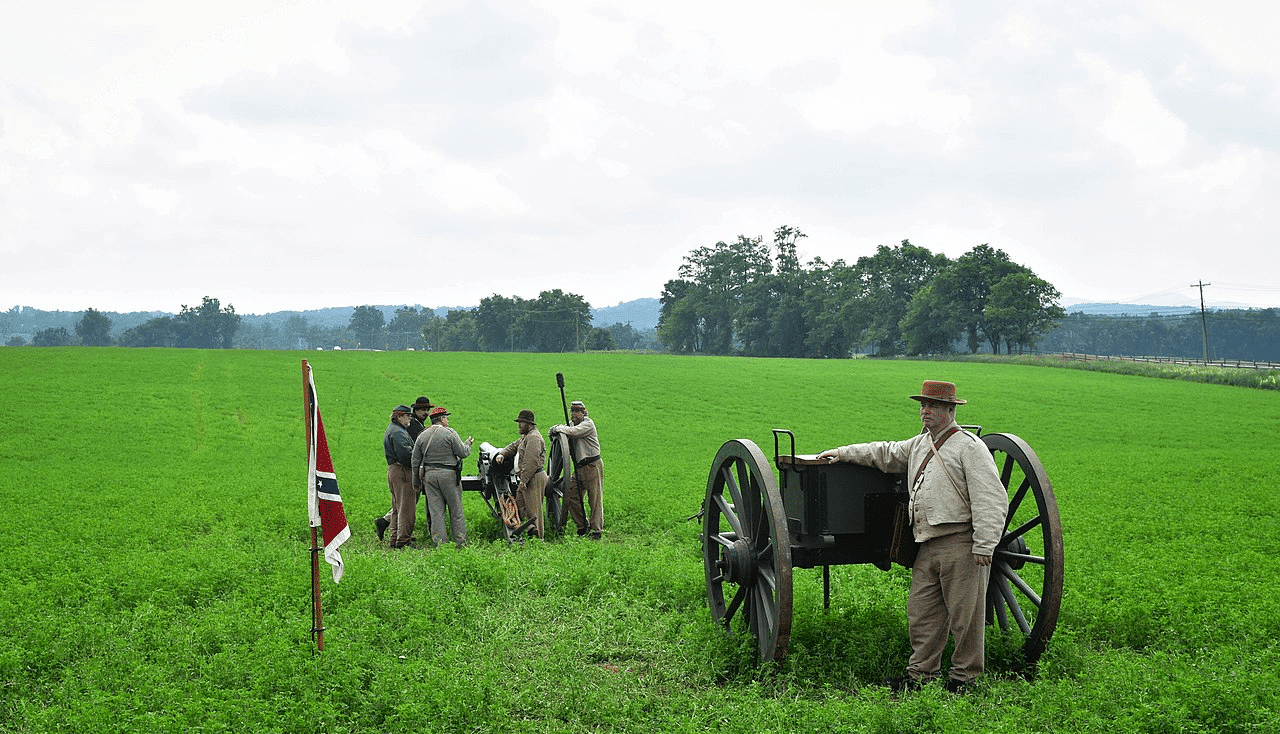
RELATED: 10 BEST Civil War Sites In America
8. Star-Spangled Banner National Historic Trail
We’ve now covered the American Revolution and the American Civil War. But what about the War of 1812? have no fear because our next site features that one. At #8 on our list of the Best Historic Sites In Maryland is the Star-Spangled Banner National Historic Trail.
The Star-Spangled Banner National Historic Trail is a 560-mile long trail that commemorates the events of the War of 1812, particularly the Battle of Baltimore in September 1814, which inspired Francis Scott Key to write “The Star-Spangled Banner,” the national anthem of the United States.
The idea of creating a trail to commemorate the events of the War of 1812 was first proposed in 2005 by Senator Paul Sarbanes of Maryland, and the trail was officially designated as a National Historic Trail in 2008. The trail follows the Chesapeake Bay, including the Patuxent River and Potomac River, and highlights more than 100 historic sites and natural areas that played a role in the War of 1812.
Some Of The Key Sites Along The Trail
Some of the key sites along the trail include Fort McHenry in Baltimore, Maryland, where the Battle of Baltimore took place; the Patuxent River Naval Air Museum in Lexington Park, Maryland, which highlights the naval history of the Chesapeake Bay region; and the Francis Scott Key Bridge in Virginia, which crosses the Potomac River.
The Star-Spangled Banner National Historic Trail provides visitors with an opportunity to learn about the War of 1812 and its impact on American history, as well as to explore the natural beauty of the Chesapeake Bay region.
Along the trail, visitors can engage in a variety of activities, such as hiking, biking, boating, and birdwatching, and attend special events, such as living history demonstrations and reenactments.

Key Point Of Interest
Points of particular interest include:
- Flag Raising at Fort McHenry
- Star-Spangled Banner Flag House and Museum
- Jefferson Patterson Park & Museum
- Fort Washington
- Concord Point Lighthouse
- North Point Beachhead War of 1812 Historic Sign
7. Clara Barton National Historic Site

Next up is a site which honors one of the most honored women in American history. She risked her life to bring supplies and support to soldiers in the field during the Civil War.
She founded the American Red Cross in 1881, at age 59, and led it for the next 23 years. Welcome to the Clara Barton National Historic Site.
The Clara Barton National Historic Site is located in Glen Echo, Maryland, and was the home of Clara Barton. The house was built in 1891 and served as Barton’s residence and headquarters for the American Red Cross until her death in 1912.
Clara Barton
Clara Barton (1821-1912) was a pioneering American nurse, teacher, and humanitarian who is best known for founding the American Red Cross. During the American Civil War, she organized nursing and relief efforts for wounded soldiers, and after the war, she worked to identify the graves of missing soldiers and to reunite them with their families.
In 1881, she founded the American Red Cross, an organization dedicated to providing humanitarian aid to people affected by natural disasters and armed conflicts. Barton served as the organization’s first president, and under her leadership, the American Red Cross played a crucial role in providing relief during a number of major disasters, including the Johnstown Flood of 1889 and the 1900 Galveston hurricane.
Barton also played a key role in establishing the Geneva Convention, which established international standards for the treatment of prisoners of war and wounded soldiers during armed conflicts.
She traveled to Europe to participate in negotiations and to advocate for the establishment of the convention, and her efforts helped to establish the foundation for modern international humanitarian law.
RELATED: 25 BUCKET-LIST Famous Landmarks In America
Things To Do At The Site
Here are some things to do at the site:
- Take a guided tour: Visitors can take a guided tour of the historic site, which includes the house, outbuildings, and grounds. The tour provides an opportunity to learn about the life and work of Clara Barton and her contributions to nursing, disaster relief, and humanitarian aid.
- Explore the museum: The museum at the Clara Barton National Historic Site features exhibits and artifacts that tell the story of Clara Barton’s life and work, as well as the history of the American Red Cross.
- Attend a special event: The Clara Barton National Historic Site hosts a variety of special events throughout the year, including living history programs, lectures, and other educational programs.
- Picnic: The historic site features a picnic area where visitors can enjoy a meal surrounded by the beautiful gardens and grounds.
- Hike: The site is located near several hiking trails, including the C&O Canal Towpath and the Capital Crescent Trail.
- Shop: The site has a bookstore that offers a selection of books, souvenirs, and other items related to the life and work of Clara Barton and the American Red Cross.

6. Captain John Smith Chesapeake National Historical Trail
Maryland is a state rich in history including some amazing historic trails and our next site is one of them. At #6 on our list of the Best Historic Sites In Maryland is the Captain John Smith Chesapeake National Historical Trail.
The Captain John Smith Chesapeake National Historical Trail is a water trail that follows the routes of the explorations of Captain John Smith, who explored the Chesapeake Bay region in the early 17th century.
The trail is approximately 3,000 miles long and covers parts of Maryland, Delaware, Virginia, Pennsylvania, and the District of Columbia.
The trail is intended to commemorate Smith’s voyages and the impact that his explorations had on the Chesapeake region and the country.
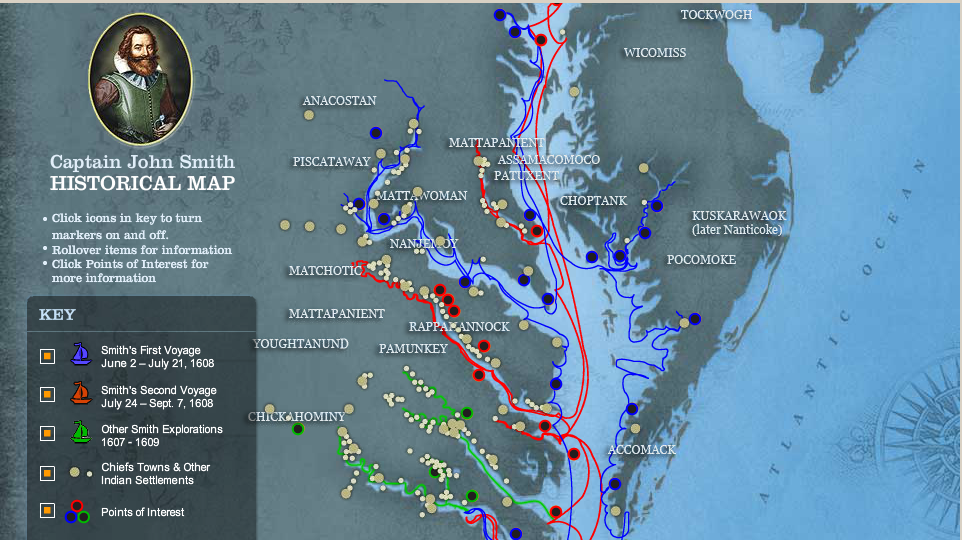
It offers visitors a variety of outdoor recreational opportunities, including paddling, boating, fishing, and wildlife viewing.
The trail is also rich in cultural and historical resources, including sites associated with Native American communities, colonial settlements, and enslaved and free African American communities.
The trail is managed by the National Park Service and offers visitors the chance to learn about the Chesapeake region’s history, culture, and natural resources.
Points Of Interest
Trails I would recommend exploring include the following:
- The Billy Goat Trail-It’s a popular trail near Potomac, Maryland. This is a protected area designed to preserve the remains of the Chesapeake and Ohio Canals with the original structures still intact. The trail offers spectacular views of the Potomac River.
- Scott’s Run River Trail-It’s a wonderful area for nature trips, walking, and running. It features a beautiful waterfall. This is a beautifully wooded trail with a mix of inclines, flat areas, and areas with loose rocks.
- The Chesapeake and Ohio Canal Trail-It’s a popular trail that leads up to an overlook of the Great Falls. You will have wonderful views of the water and rock formations.
Top 5 Historic Sites In Maryland
5. Chesapeake & Ohio Canal National Historical Park
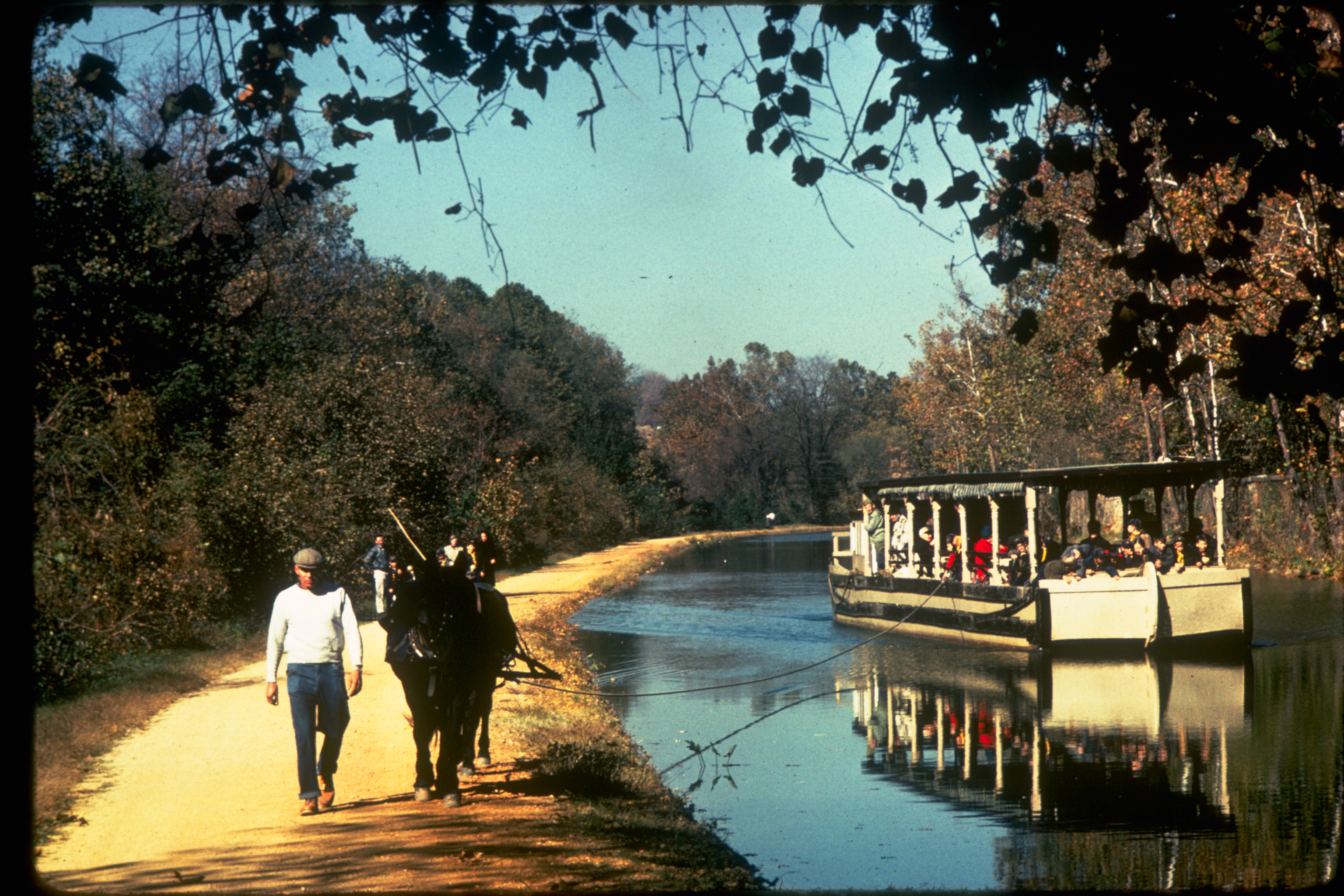
We’re on to our Top 5 Historic Sites In Maryland! Operating for nearly 100 years, our next historic site was a lifeline for communities along the Potomac River as coal, lumber, and agricultural products floated down the waterway to market. Today it endures as a pathway for discovering historical, natural, and recreational treasures.
Welcome to the Chesapeake & Ohio Canal National Historical Park.
The Chesapeake & Ohio Canal National Historical Park is a preserved stretch of the Chesapeake and Ohio Canal, which ran for 184.5 miles along the Potomac River from Washington, D.C., to Cumberland, Maryland, in the mid-19th century.
The park is located in Maryland, Virginia, and West Virginia and was established in 1961 to preserve and interpret the history of the canal and its impact on American transportation and commerce.
Construction on the canal began in 1828 and was completed in 1850, providing a vital transportation link between the eastern seaboard and the Ohio River valley. The canal was used primarily for transporting coal and other raw materials, as well as agricultural goods and other products, and played a crucial role in the development of industry and commerce in the region.
The Canal’s Hey Day Was Short Lived
The canal’s heyday was short-lived, however, as competition from the railroads and other forms of transportation led to its decline in the late 19th century. By the early 20th century, the canal was no longer in use, and much of it fell into disrepair and was abandoned.
In the 1950s, efforts were made to preserve the canal and its history, and the Chesapeake & Ohio Canal National Historical Park was established in 1961. Today, the park features 184.5 miles of the canal, as well as historic structures, trails, and interpretive exhibits that tell the story of the canal and its impact on American history.
Visitors to the Chesapeake & Ohio Canal National Historical Park can take guided tours, ride on a mule-drawn canal boat, hike along the towpath, and explore the historic structures and exhibits that bring the history of the canal to life.

RELATED: 15 MUST-SEE Historic Sites In Ohio
4. Fort McHenry National Monument & Historic Shrine
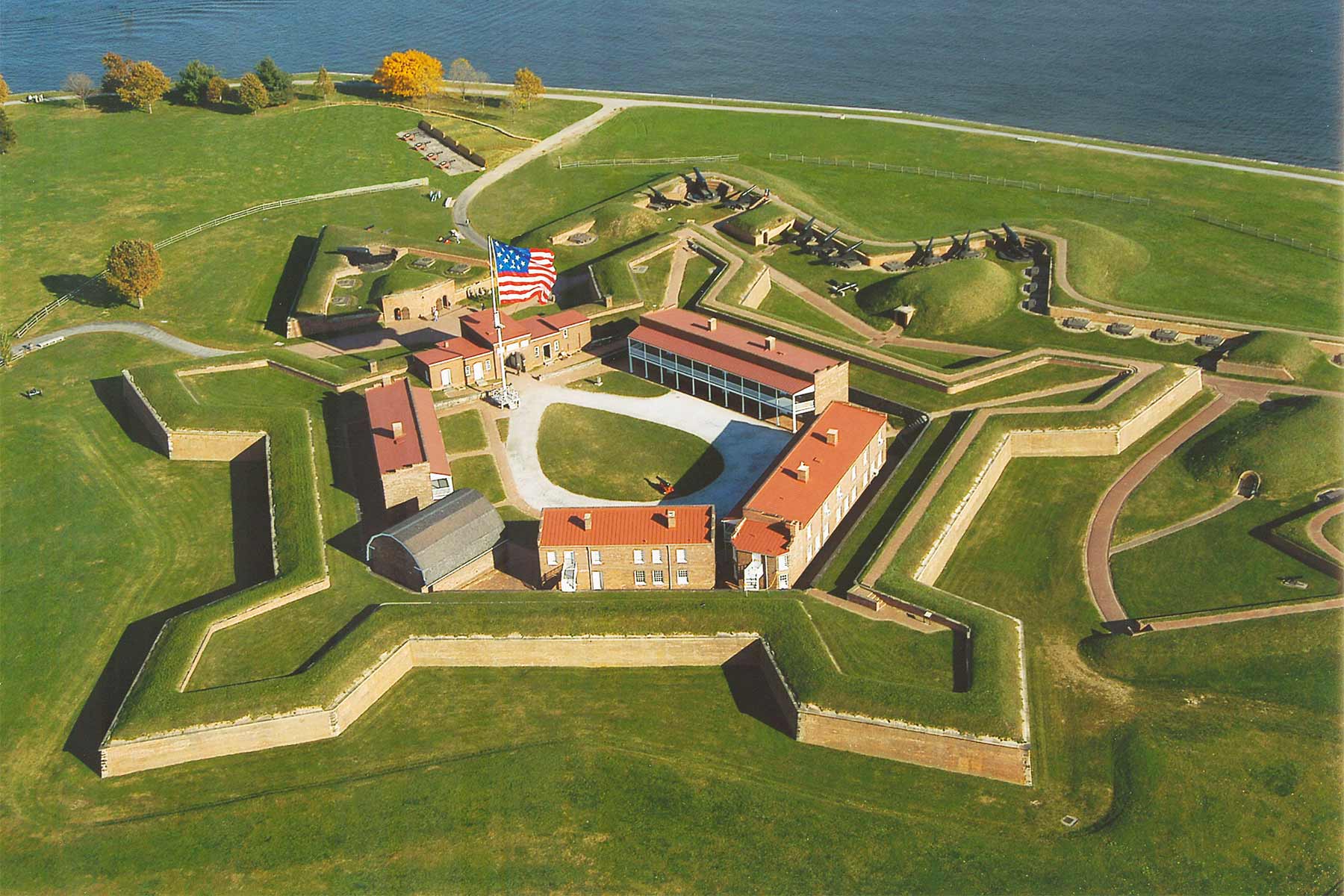
It’s the “Final Four” historic sites and these are all must-see places. At #4 is a place which inspired our national anthem. If you enjoy military history then you’ll love this site. It’s the Fort McHenry National Monument & Historic Shrine.
The Fort McHenry National Monument & Historic Shrine is a preserved fortification located in Baltimore, Maryland. The fort played a pivotal role in the War of 1812, as it successfully defended the city of Baltimore against a British naval attack in 1814.
The site was designated a National Monument and Historic Shrine in 1939 to preserve its historical significance and to honor the men and women who fought and died in defense of the United States.
The fort was constructed in 1798 and was named after James McHenry, the Secretary of War under President George Washington. The fort was designed to protect the city of Baltimore and the Chesapeake Bay, and it played an important role in the defense of the United States during the War of 1812.
In September 1814, British forces launched a naval attack on Baltimore, hoping to capture the city and deal a crippling blow to the United States’ war effort. The British fleet bombarded Fort McHenry for 25 hours, but the fort’s defenders, led by Major George Armistead, held firm, withstanding the barrage of shells and rockets.
During the attack, Francis Scott Key, a lawyer and amateur poet who was being held captive by the British, witnessed the battle from a nearby ship. Inspired by the sight of the American flag flying over the fort, despite the intense bombardment, Key wrote a poem that later became the lyrics to the “Star-Spangled Banner,” the national anthem of the United States.
Things To Do
There are several activities and things to do at the Fort McHenry National Monument & Historic Shrine:
- Take a Guided Tour: There are several guided tours available that offer visitors a chance to learn about the history of the fort, the War of 1812, and the events that led to the writing of the national anthem.
- Attend a Flag-Raising Ceremony: Visitors can witness a flag-raising ceremony at the fort, where park rangers raise the American flag over the fort just as it was done during the War of 1812.
- Watch Reenactments: Throughout the year, the fort hosts living history demonstrations and reenactments that provide visitors with a glimpse into life at the fort during the War of 1812.
- Explore the Fort: Visitors can explore the fort’s grounds, including the barracks, officer’s quarters, and artillery emplacements, and get a sense of what life was like for the soldiers who defended the fort.
- Take a Walk: The fort is located on a scenic point overlooking the Baltimore Harbor, and visitors can take a walk along the waterfront promenade and enjoy views of the harbor and the city.
- Attend Special Events: The fort hosts a variety of special events throughout the year, including concerts, festivals, and historical reenactments.
- Learn at the Visitors Center: The Visitors Center at the fort features exhibits and displays that provide visitors with information about the fort’s history, the War of 1812, and the writing of the national anthem.
- Picnic and Relax: There are several picnic areas located on the fort’s grounds, where visitors can enjoy a picnic lunch and take in the scenery.

3. Harpers Ferry National Historical Park
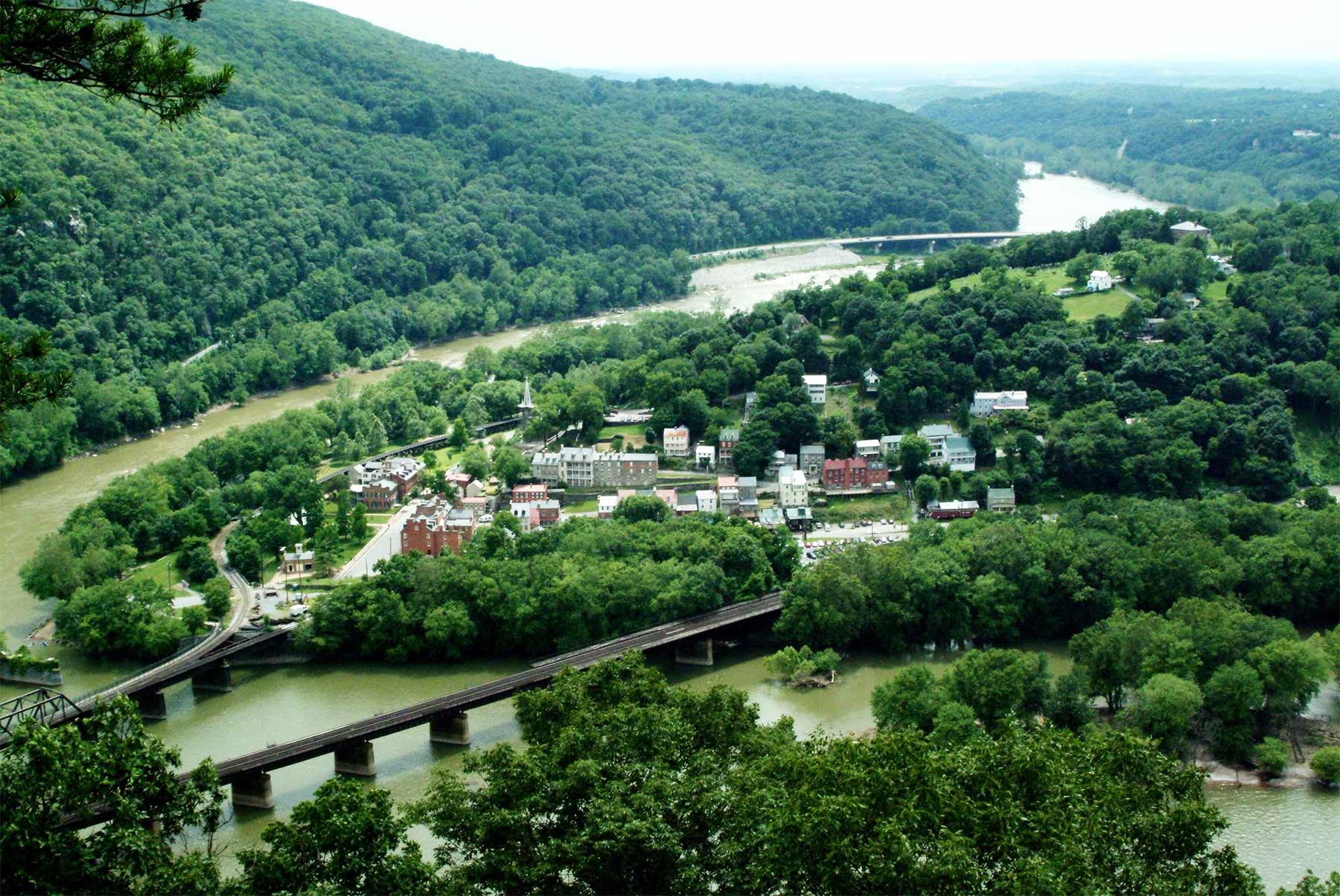
Our next historic site changed hands eight times during the Civil War. At #3 on our list of the Best Historic Sites In Maryland is Harpers Ferry National Historical Park.
It’s located at the confluence of the Shenandoah and Potomac Rivers in West Virginia. The park was established in 1944 to preserve and interpret the history of the town of Harpers Ferry, which played a significant role in American history.
Harpers Ferry was founded in 1763 by Robert Harper, who established a ferry service across the Potomac River. The town grew and prospered over the years, becoming a center for industry and commerce in the region.
The John Brown Raid
In 1859, Harpers Ferry became the site of a pivotal event in American history, when abolitionist John Brown led a raid on the federal armory located in the town. Brown and his followers hoped to arm slaves and start a rebellion against slaveholders.
The raid failed, and Brown was captured and later executed. The raid and Brown’s subsequent trial and execution were significant events that helped to further inflame tensions between the North and South, ultimately leading to the Civil War.
During the Civil War, Harpers Ferry changed hands eight times between Union and Confederate forces. The town was a critical transportation hub, and control of the town was vital to both sides.
After the war, Harpers Ferry struggled to recover. The town’s industrial base declined, and many of the buildings were destroyed or fell into disrepair.
In 1944, the National Park Service established the Harpers Ferry National Historical Park to preserve the town’s history and to honor the men and women who fought and died in the struggles that took place there.

Things To Do At Harpers Ferry
There are many things to do and see at Harpers Ferry National Historical Park. Here are some of the top activities and attractions:
- Visit the John Brown Museum: This museum is located in the firehouse where John Brown was captured. It features exhibits about his life and the raid on the armory.
- Take a guided tour: The park offers a variety of guided tours, including ranger-led walking tours of the historic town, Civil War battle tours, and nature walks.
- Explore the town: The historic town of Harpers Ferry is a fascinating place to explore. You can see the preserved buildings from the 19th century, including houses, shops, and churches.
- Hike the trails: Harpers Ferry is located at the intersection of the Potomac and Shenandoah rivers, and there are many beautiful trails to explore in the area. You can hike the Appalachian Trail, the Maryland Heights Trail, or the Loudoun Heights Trail.
- Visit the armory site: The armory site is where John Brown and his followers raided in 1859. You can see the ruins of the armory and learn about its history at the visitor center.
- Attend special events: Throughout the year, the park hosts special events such as Civil War reenactments, concerts, and festivals.
- Go whitewater rafting or tubing: The Potomac and Shenandoah rivers offer excellent opportunities for whitewater rafting and tubing. You can rent equipment or book a guided tour through local outfitters.
- Explore the C&O Canal: The Chesapeake and Ohio Canal runs along the Potomac River and offers a scenic path for hiking, biking, and kayaking.
- Visit the Harpers Ferry National Park Bookshop: The bookshop offers a wide selection of books, maps, and other items related to the history and natural beauty of the area.
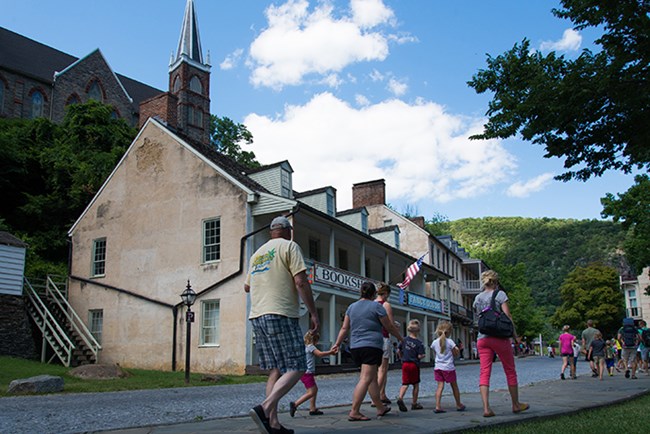
2. Harriet Tubman Underground Railroad National Historical Park
We’re on to our final sites. In the runner-up spot at #2 is a site which honors a woman who liberated about 70 people on more than a dozen dangerous missions to slave-holding states in the decade prior to the Civil War.
Welcome to the Harriet Tubman Underground Railroad National Historic Park.
Harriet Tubman
Harriet Tubman (c. 1822 – 1913) was an American abolitionist and political activist. Born into slavery in Maryland, she escaped to freedom in 1849 and subsequently became one of the most well-known “conductors” of the Underground Railroad, a secret network of people and safe houses that helped slaves escape to freedom.
Tubman risked her life multiple times to help enslaved people escape, leading over 13 missions and personally guiding around 70 slaves to freedom. She was also an advocate for women’s suffrage and worked alongside prominent suffragists like Susan B. Anthony and Elizabeth Cady Stanton.
During the Civil War, Tubman served as a nurse, cook, and spy for the Union Army, becoming the first woman to lead an armed expedition in the war. She led a group of scouts into South Carolina and helped to liberate over 700 slaves.
After the war, Tubman continued to advocate for civil rights, including women’s suffrage and the establishment of schools for African Americans. She also established the Harriet Tubman Home for the Aged, which provided care for elderly African Americans.
Tubman’s bravery and dedication to the cause of freedom made her an iconic figure in American history. She is often referred to as the “Moses of her people” for her role in leading slaves to freedom, and her legacy continues to inspire generations of activists and leaders today.
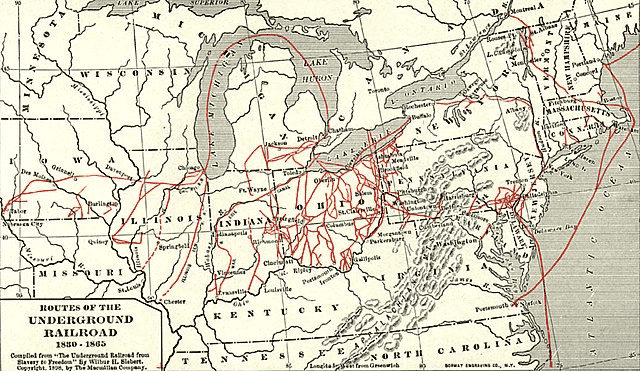
Things To Do At The Site
The Harriet Tubman Underground Railroad National Historic Park is a historic park located in Maryland that preserves the landscape and sites associated with the life of Harriet Tubman, a prominent conductor of the Underground Railroad.
The Underground Railroad was a network of secret routes and safe houses used by enslaved African Americans to escape to freedom.
The park includes several sites associated with Tubman’s life, including the visitor center, which features permanent exhibits and interpretive experiences that provide an in-depth look at her life and work.
Visitors can also stroll through the Legacy Garden, which is dedicated to preserving the memory of Harriet Tubman and other abolitionists.
The park offers a variety of outdoor recreational activities such as hiking, biking, and bird watching, visitors can also take guided tours and learn about the Underground Railroad, Harriet Tubman’s life and the history of slavery in the United States.
It is managed by the National Park Service and is a popular destination for history buffs, Civil War enthusiasts and those interested in American social justice movements.
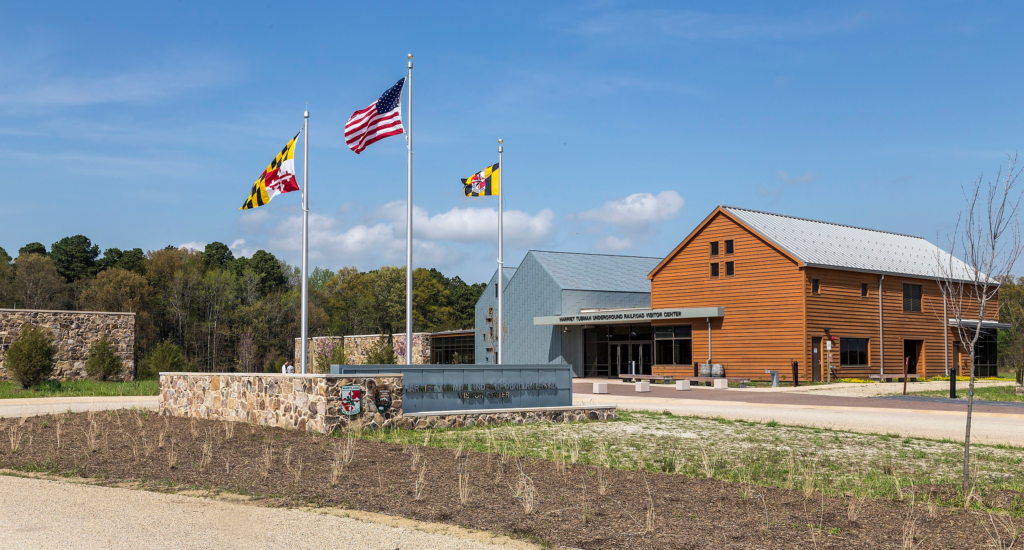
“I was the conductor of the Underground Railroad for eight years, and I can say what most conductors can’t say — I never ran my train off the track and I never lost a passenger.”
-Harriet Tubman
RELATED: 20 BEST Black History Sites In America For You To Visit
1. Antietam National Battlefield
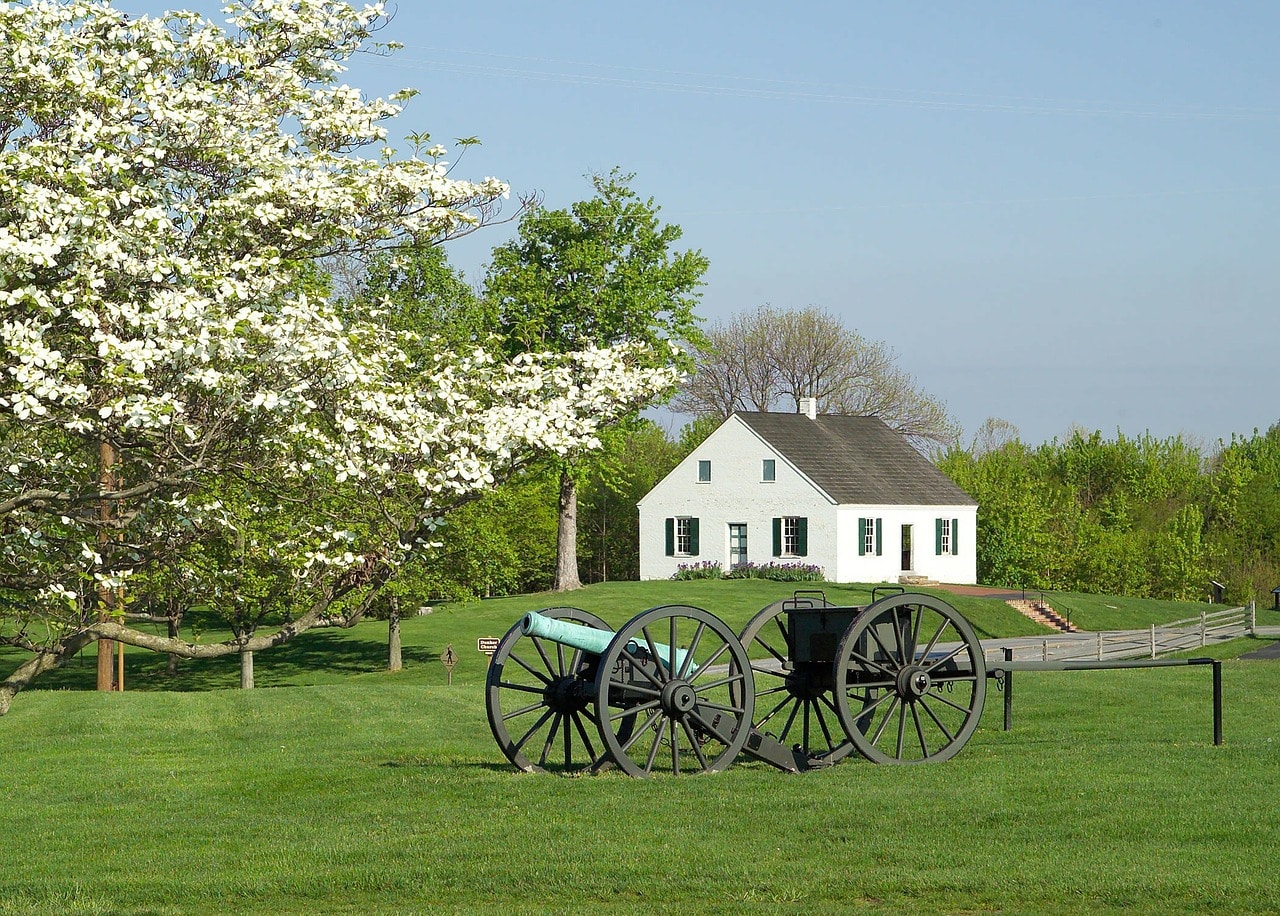
As the #1 Historic Site In Maryland, More Than Just Parks has selected Antietam National Battlefield.
Why Antietam? Because the Union victory at Antietam provided President Abraham Lincoln the opportunity he had wanted to announce the Emancipation Proclamation, making the Battle of Antietam one of the key turning points of the American Civil War.
The Battle of Antietam featured the bloodiest single day in American history. It was one of the pivotal battles of the American Civil War. President Abraham Lincoln was desperate for a Union victory against Confederate General Robert E. Lee and his Army of Northern Virginia.
Many historians consider this battle to be a stalemate. Lee’s invasion of the North was stopped, however, and this was decisive enough for Lincoln to move forward with his historic Emancipation Proclamation.
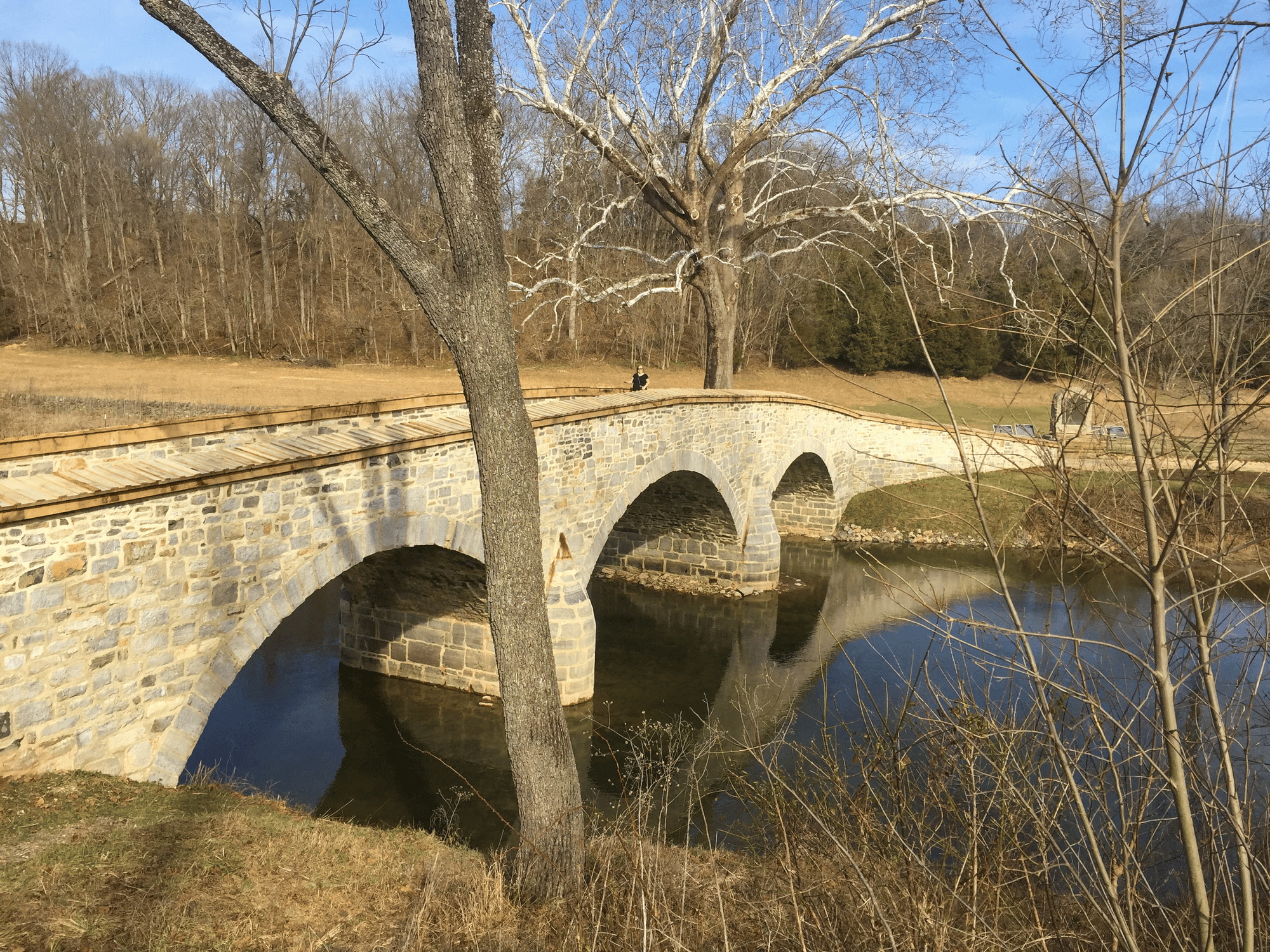
Six Other Ways That Antietam Changed The Course Of History

- Robert E. Lee is the military genius who confounded one northern general after another. Lee was fresh off of his victory in the Second Battle of Bull Run. At Antietam, his plan was to invade the north. He was repelled, however, and would not attempt another invasion of the North until the Battle of Gettysburg in 1863.
- A string of Confederate victories in the summer of 1862 had brought France and Great Britain close to recognition of the Confederate States of America. This would have been devastating for the Union cause. Lee’s inability to win a decisive victory at Antietam halted this momentum towards diplomatic recognition.
- The Union’s ability to stop Lee and force him to withdraw lifted northern morale.
- Antietam was one of the first battles in history to feature photographic images of twisted bodies littering the devastated landscape and stacked in heaps like slaughtered livestock. These images brought the horror of war home to the civilian population.
- The Union’s ability to stop Lee helped President Lincoln’s Republican Party in the 1862 elections. Democrats had been highly critical of the President’s conduct of the war. They were hoping to make significant political gains. Republicans, however, actually gained seats in the Senate and maintained a majority in the House.
- While Lee was stopped, Union Commander George McClellan refused to pursue Lee’s Army as Lincoln felt he should have. For McClellan, this was the beginning of the end as Lincoln began to search for a new commander.
Things To Do At The Antietam National Battlefield
If you’re a first-timer then I definitely recommend beginning your trip at the visitor center. The Newcomer House and Barn are positioned at the eastern gateway to the Antietam National Battlefield.
The Newcomer House serves as Visitor Center for the Heart of the Civil War Heritage Area. There you can see museum exhibits about the battle.
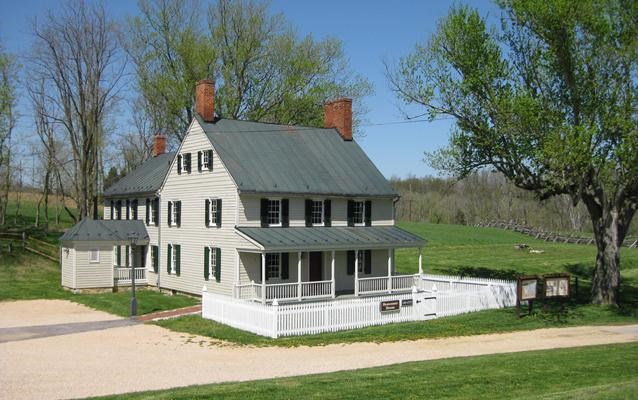
There is a self-guided 8 1/2 mile auto tour through the battlefield. The tour has 11 stops and begins at the Dunker Church.
Or, if you prefer walking to driving then you can hike the Bloody Lane, Cornfield, Final Attack, Union Advance, Antietam Remembered, Sherrick Farm or Snavely Ford Trails.
I recently traveled to Antietam with my wife and son. While there, I picked up A Fierce Glory: Antietam–The Desperate Battle That Saved Lincoln and Doomed Slavery by Justin Martin. It’s a thoughtful examination of how this battle changed the trajectory of the conflict.

The Pry House Field Hospital Museum | The Birthplace Of Modern Emergency Medicine
Another place that you should check out is the Pry House Field Hospital Museum. The Pry House sits on Antietam National Battlefield near Sharpsburg, Maryland. It was built in 1844 as the home of Phillip and Elizabeth Pry and their six children.
During the Battle of Antietam in September 1862, the house served as headquarters for General George McClellan, as well Major Jonathan Letterman, the army’s medical director.
Antietam is the birthplace of modern emergency medicine. It was here that Letterman developed an efficient system for securing, evacuation, and treating casualties. Now called the Letterman Plan, it remains the basis of medical response on battlefields and in disaster situations around the world.
Today the Pry House is home to the Pry House Field Hospital Museum, a satellite museum of the National Museum of Civil War Medicine. The museum includes two floors of exhibits with original artifacts and text panels discussing battlefield medicine and field hospitals of the Civil War, especially Antietam.
Visitors will see fascinating exhibits including a re-creation of an operating theater, interpretive panels and objects relating to the care of wounded and the effects on the civilian population in the area as well as information about the Pry House.
There’s a wonderful book that I recommend regarding this fascinating topic. It’s Surgeon in Blue: Jonathan Letterman, the Civil War Doctor Who Pioneered Battlefield Care by Scott McGaugh.

List Of Historic Sites In Maryland
- Antietam National Battlefield
- Harriet Tubman Underground Railroad National Historical Park
- Harpers Ferry National Historical Park
- Fort McHenry National Monument & Historic Shrine
- Chesapeake & Ohio Canal National Historical Park
- Captain John Smith Chesapeake National Historical Trail
- Clara Barton National Historic Site
- Star-Spangled Banner National Historic Trail
- Monocacy National Battlefield
- Washington-Rochambeau Revolutionary Route National Historic Trail
- Frederick Douglass Museum and Cultural Center
- B&O Railroad Museum
- Benjamin Banneker Historical Park and Museum
- National Museum of Civil War Medicine
- Edgar Allan Poe House and Museum
Why Trust Us About Historic Sites In Maryland?
We’re Jim Pattiz and Will Pattiz, collectively known as the Pattiz Brothers and we absolutely LOVE the national parks.
You should probably know that we don’t just make this stuff up out of thin air. We’ve spent our entire adult lives exploring and filming America’s national parks and public lands.
We’ve worked with the National Park Service, the Department of Interior, USDA, U.S. Forest Service, and more for years creating films on important places and issues. Our work has been featured in leading publications all over the world and even some people outside of our immediate family call us experts on the national parks.
And, in 2018, our father – having spent a lifetime teaching history – joined us so that he could help us to tell the stories behind these amazing places.
Meet The Parks Brothers
We Hope You’ll Follow Our Journey

Our goal here at More Than Just Parks is to share the beauty of America’s national parks and public lands through stunning short films in an effort to get Americans and the world to see the true value in land conservation.
We hope you’ll follow our journey through the parks and help us to keep them the incredible places that they are. If you’re interested joining the adventure, sign up below!
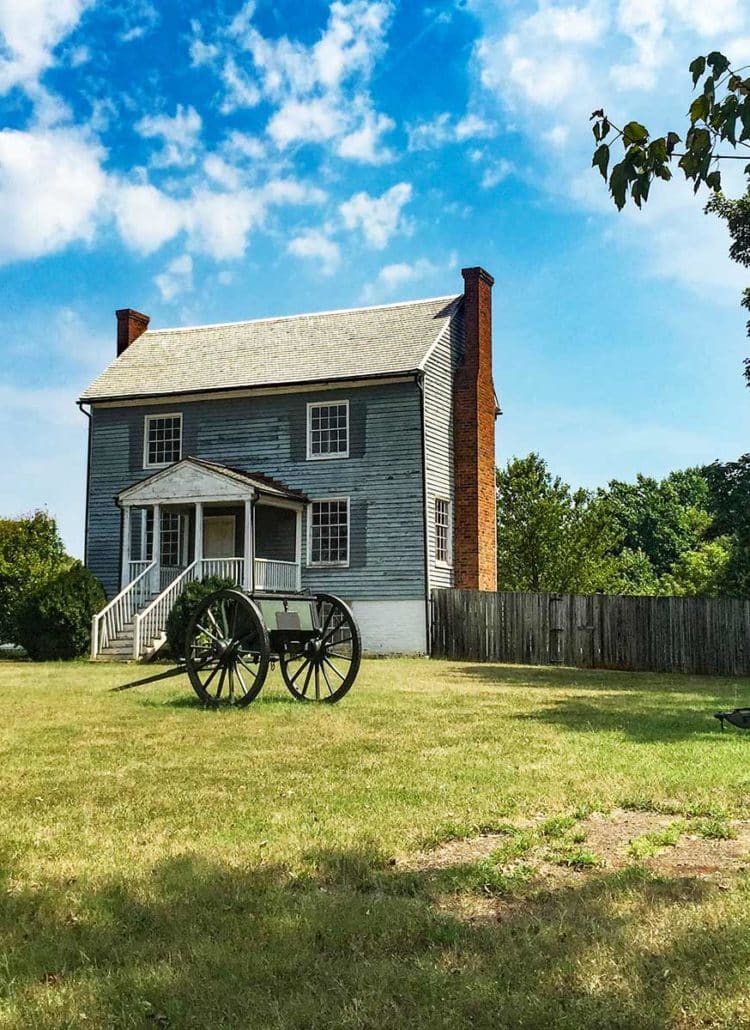
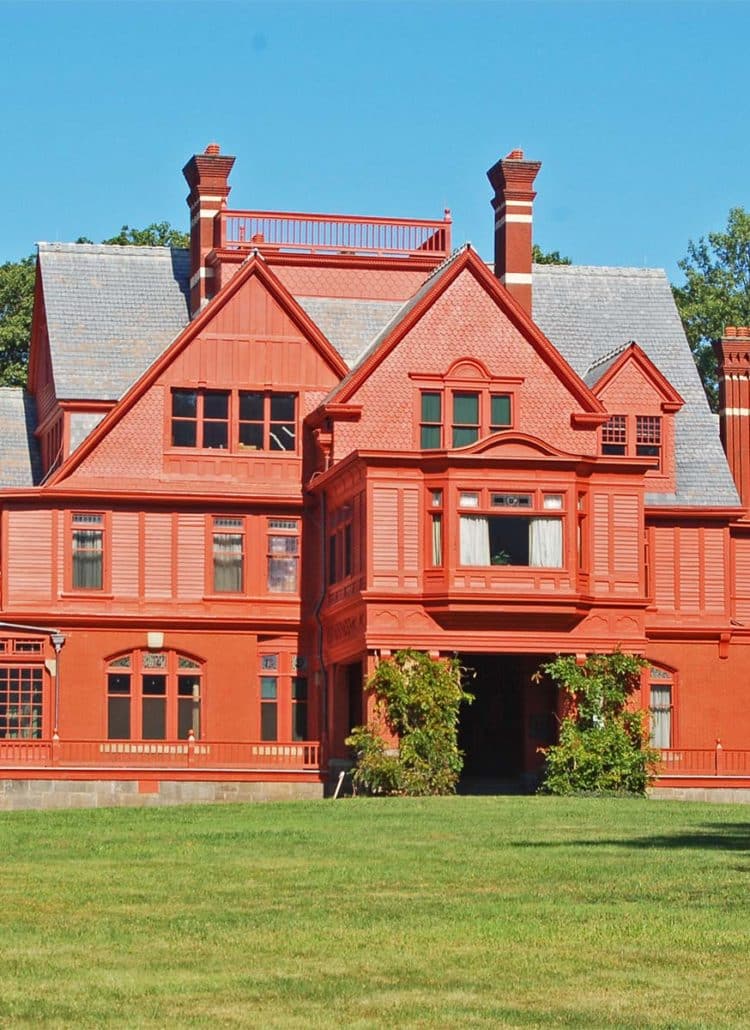

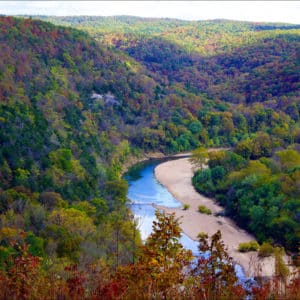

Leave a Reply